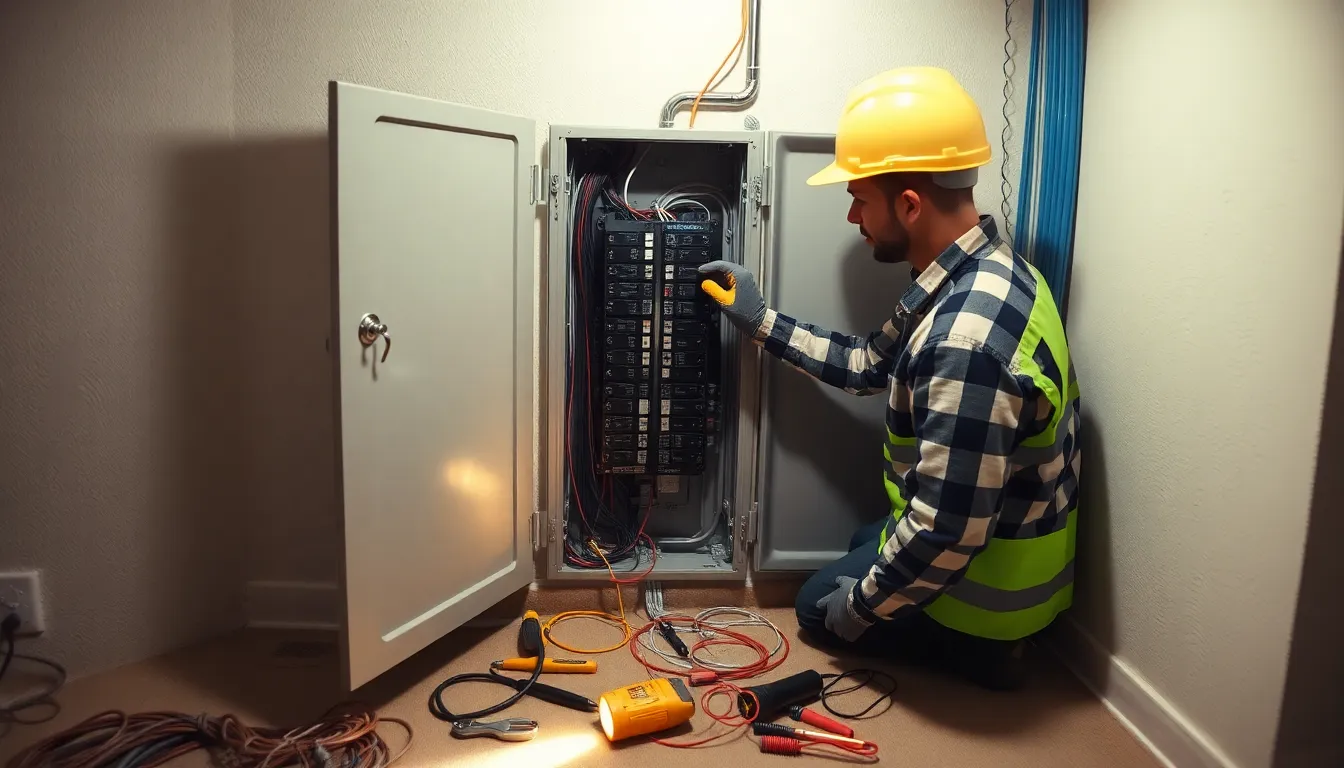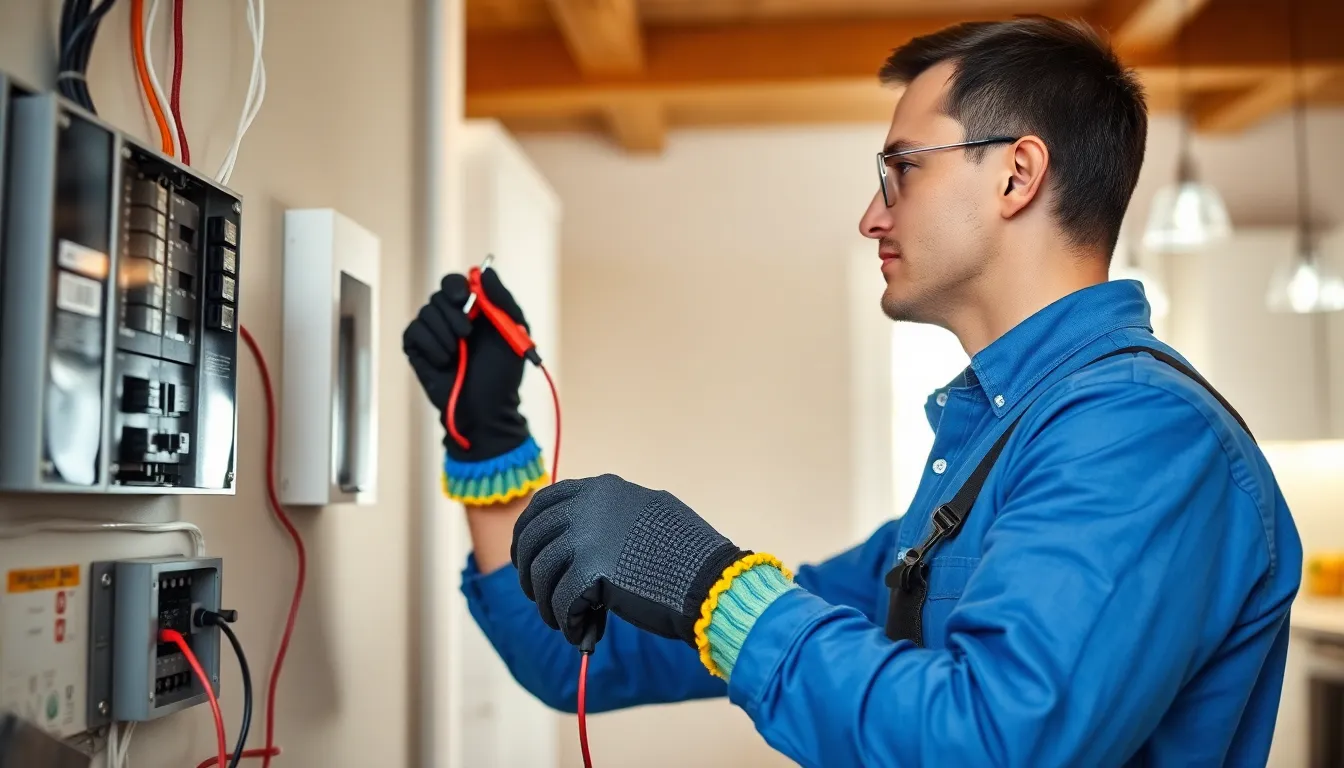Electrical wiring is the backbone of any modern home, ensuring that power flows safely and efficiently. Over time, wear and tear can lead to potential hazards, making regular checks essential for safety and functionality. A thorough electrical wiring check not only prevents accidents but also enhances the overall efficiency of the electrical system.
Understanding how to conduct a proper inspection empowers homeowners to identify issues before they escalate. From frayed wires to loose connections, recognizing these signs can save time, money, and even lives. With the right knowledge and tools, anyone can ensure their electrical system is in top shape, providing peace of mind in a world increasingly reliant on electricity.
Table of Contents
ToggleImportance Of Electrical Wiring Check
Conducting an electrical wiring check is vital for maintaining a safe and efficient electrical system. Regular inspections help identify issues before they escalate, ensuring the safety of occupants and the longevity of the electrical infrastructure.
Safety Considerations
Safety considerations highlight the critical importance of electrical wiring checks. Faulty wiring can lead to electrical fires, electrocution, and equipment damage. The National Fire Protection Association (NFPA) reports that electrical failures cause 13% of residential structure fires. Regular inspections detect issues like frayed wires, exposed connections, and outdated systems that pose serious hazards. Homeowners can minimize risks by addressing these problems promptly.
Preventative Maintenance
Preventative maintenance focuses on maintaining electrical systems to avoid costly repairs and inefficiencies. Regular checks enhance system reliability and energy efficiency by identifying and rectifying faults. Performing checks reduces the likelihood of unexpected outages and equipment failures. Scheduled inspections, ideally every three to five years, ensure components like circuit breakers, outlets, and wiring conform to safety standards. Implementing a routine maintenance plan helps homeowners preserve their electrical systems and protect their investments.
Steps For Conducting An Electrical Wiring Check

Conducting an electrical wiring check involves several key steps to ensure safety and functionality. Homeowners must prepare by gathering tools, inspecting outlets, switches, and testing circuit breakers.
Gathering Necessary Tools
- Multimeter: A multimeter measures voltage, current, and resistance, allowing for accurate diagnostics.
- Insulation Resistance Tester: This device checks the integrity of insulation on wiring, detecting potential failure points.
- Screwdrivers: Use both flathead and Phillips screwdrivers for accessing outlets, switches, and panels.
- Wire Strippers: These tools strip insulation off wires, aiding in repairs if needed.
- Voltage Tester: A non-contact voltage tester assesses whether electrical components are live or safe to touch.
- Flashlight: Ensure adequate lighting for thorough inspections in dark areas, such as basements or attics.
Inspecting Outlets And Switches
- Check Faceplates: Ensure faceplates sit securely; loose components may indicate underlying issues.
- Look for Discoloration: Examine outlets and switches for burn marks or discoloration, signs of overheating.
- Test Operation: Use a voltage tester to confirm outlets provide electrical current; non-responsive outlets require further investigation.
- Assess Wiring Condition: Carefully check visible wiring for fraying, damage, or corrosion that may compromise safety.
Testing Circuit Breakers
- Inspect Breaker Panel: Open the panel and check for any tripped breakers or signs of wear and tear.
- Cycle Breakers: Reset breakers by flipping them off and then back on, confirming functionality.
- Check for Overheating: Feel the temperature of each breaker; hot breakers indicate potential overload or failure.
- Label Breakers: Properly label each breaker to simplify future troubleshooting and maintenance.
Common Issues Found During An Electrical Wiring Check
Electrical wiring checks often reveal several common issues that compromise safety and efficiency. Identifying these problems early enhances the reliability of electrical systems.
Frayed Wires
Frayed wires pose a significant risk, often caused by age, wear, or exposure. These damaged wires can lead to electrical shorts or fires. Insulation breakdown exposes conductive materials, making direct contact with other objects dangerous. Regular checks help identify frayed wires before they become major hazards. Homeowners must replace any frayed wires promptly to ensure safety.
Loose Connections
Loose connections frequently occur at electrical terminals and junction boxes, leading to arcing or overheating. This increased resistance causes heat buildup, which can ignite surrounding materials. Regular inspections ensure that connections are secure and free of corrosion. Tightening or replacing loose connections significantly reduces the risk of electrical failures, creating a safer environment.
Outdated Wiring
Outdated wiring systems, such as aluminum wires from older installations, present unique challenges. These systems often lack the capacity to handle modern electrical loads, increasing the likelihood of overloading. Additionally, outdated wiring may not meet current safety codes, leading to potential hazards. Upgrading to modern wiring systems enhances safety, improves efficiency, and ensures compliance with current electrical standards. Regular reviews identify outdated wiring, allowing homeowners to make necessary updates promptly.
Benefits Of Regular Electrical Wiring Checks
Regular electrical wiring checks offer essential advantages that maintain safety and efficiency in homes. These inspections not only avert potential hazards but also enhance overall system performance.
Enhanced Safety
Enhanced safety represents a significant benefit of conducting routine electrical wiring checks. Faulty wiring can lead to electrical fires and electrocution, jeopardizing lives and property. The National Fire Protection Association (NFPA) indicates that electrical failures are responsible for 13% of residential structure fires. Regular inspections help identify and rectify dangerous conditions, such as frayed wires and loose connections. Timely interventions reduce risks and create a safer environment for occupants.
Improved Energy Efficiency
Improved energy efficiency results from regular electrical wiring checks, contributing to lower utility bills and reduced environmental impact. Aging or damaged wiring can cause energy loss and inconsistent power supply, leading to inefficient appliance operation. Inspections can reveal issues, such as outdated wiring systems or poor connections, that lead to energy waste. By addressing these inefficiencies, owners can enhance their electrical system’s performance and ultimately save money over time.
Regular electrical wiring checks are vital for maintaining a safe and efficient home. Homeowners who prioritize these inspections not only protect their families from potential hazards but also enhance the longevity of their electrical systems. By being proactive about identifying issues like frayed wires and loose connections, they can avoid costly repairs and improve energy efficiency.
Embracing a routine inspection schedule every three to five years can lead to significant benefits. It ensures compliance with safety standards while fostering a reliable electrical infrastructure. With the right tools and knowledge, anyone can take charge of their electrical safety, making informed decisions that safeguard their homes and investments.







